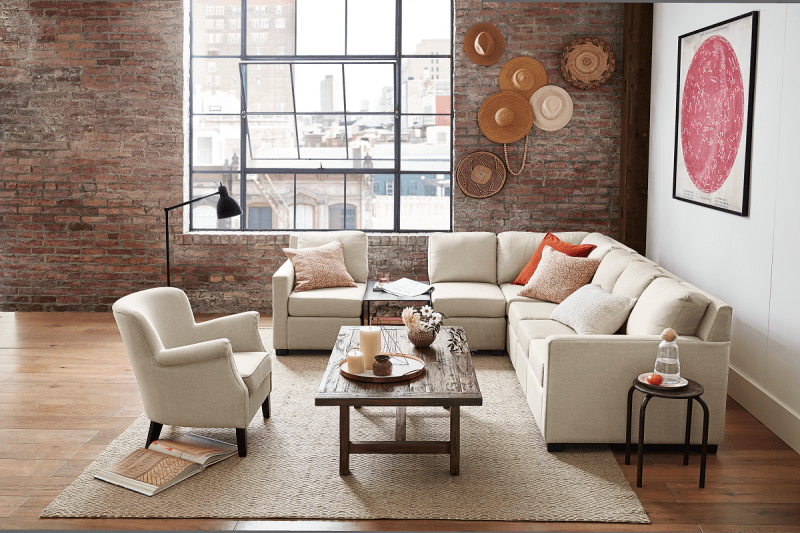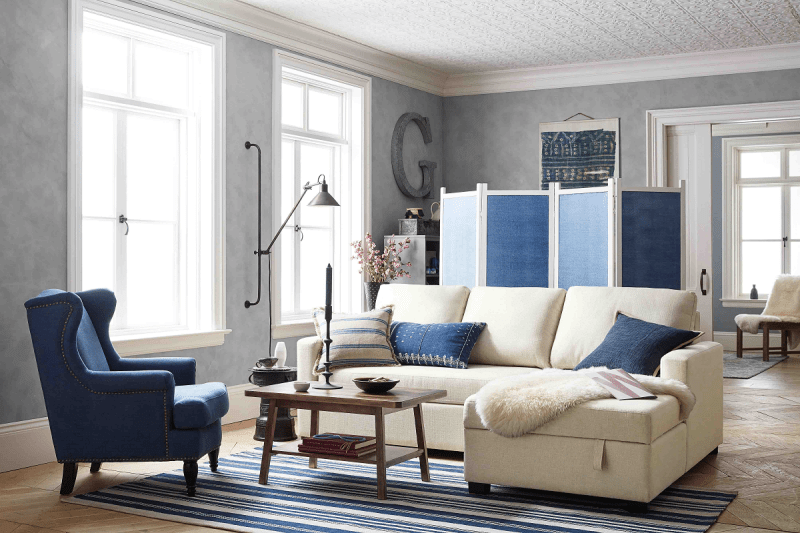How To Choose Furniture For Small Spaces
Just because your room is small doesn’t mean it can’t have loads of style! So if you’re stuck for ideas when it comes to decorating your small space, rest easy. We’re here to help with these tips to make sure your space is warm, welcoming and perfect for the way you live.
When it comes to decorating and furnishing small spaces, it’s great to look for furniture that does double duty. Ottomans, for example, are a great choice for small spaces. Place it at the end of your sofa and you’ve got an instant sectional. Ottomans add extra seating that’s perfect for when guests come to visit and if you place a tray on top, it can do just about everything a coffee table does. Likewise, a sturdy stool can serve as both seating and side table when you need it.
Do something non-traditional. Instead of a sofa in a small living room, choose a daybed. You can sit on it by day and use it as a guest bed by night. Instead of a large dining room table with individual chairs for your dining area, use a bench for at least one side. You’ll get more seating for the space and keep the dining area looking fresh.
Pressed for storage space? Keep an eye out for furniture with hidden storage compartments like storage ottomans and lift coffee tables. Substitute a small dresser or desk in place of a side table or entertainment center and use the drawers for storage. You can also add a couple of baskets to your book shelves to add extra stealthy storage where you need it most.
You can also select furniture that isn’t as large as traditional pieces. A backless sofa takes up less space and works against a wall or in the center of the room. Skip the puffy armchairs and look for something slimmer yet still comfortable. You can even opt for a settee or loveseat instead of a three- or four-cushion sofa. When it comes to items like bookcases and dressers, tall and thin can be better than short and wide. While you may not have much floor space, the height of the walls can provide endless possibilities.
When choosing a layout for your furniture, take advantage of the perimeter of the room. Line your pieces around the edges, leaving the center free for foot traffic. The openness will also make the room look bigger. On the contrary, if the room looks too empty, try adding a nice throw rug to the center.
Another great idea is to choose furniture that you can see through. Glass tables and shelving, bookcases without sides, and acrylic chairs can feel as if they take up less space, even if they might not. The fact is that they don’t obstruct your line of vision, allowing you to take in the entire room without having to look around or over something.
If your furniture does take up a bit of space or give the room a fuller look no matter what you do, use some of these strategies to make it look more spacious. Mirrors make a room feel open, especially when you place them opposite your windows. Plants behind chairs or in corners can also make a room appear larger. Also consider mounting items like TVs and lamps to the wall.
Other options for furniture for small spaces include stackable stools. Keep them tucked away when they’re not in use, but instantly add more seating at dinner time or when you have guests. In addition, benches are thinner than chairs and sofas, fit snugly against the wall, and can even tuck up under your dining room table when not in use. Lastly, pedestal tables also take up less floor space than tables with four legs and are visually lighter in smaller rooms.




